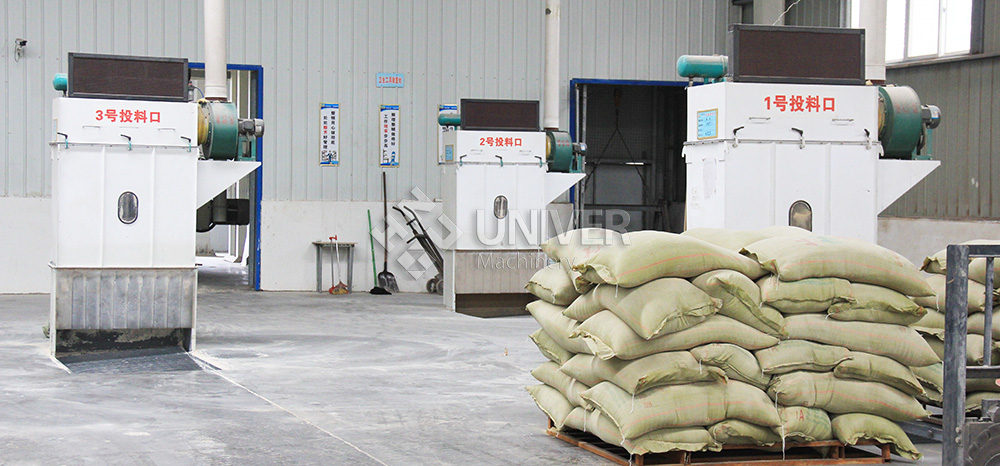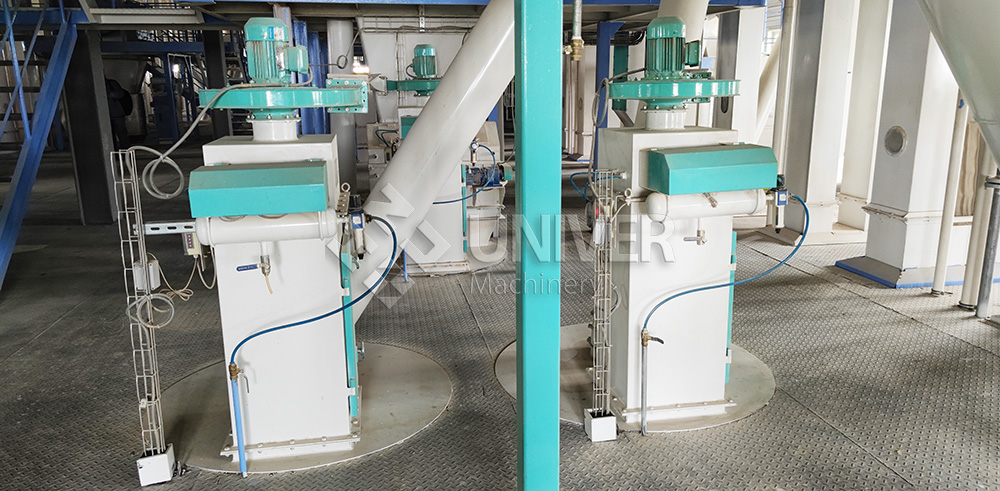The main responsibility of the raw material feeder is to put the raw materials required for production into the designated equipment port in a timely, accurate, quality and quantity manner according to the instructions of the computer operator in the computer (control) room. The operating procedures and basic regulations are as follows:

1. Arrive at work in advance and prepare.
You must arrive at the production site 10 minutes before the scheduled work time. Participate in the pre-shift meeting carefully, accurately understand and accept the feeding tasks of the class; wear work clothes and labor protection equipment as required; check all machines and equipment under the management of this position; and make all preparations before the official feeding.
2. Confirm the warehouse number, instructions, and elevator.
Before feeding, you must contact the computer (control) room to confirm that the opened raw material warehouse number is correct, and get the feeding instructions from the computer room. You can feed when the elevator is operating normally.

3. Open bags, check quality, and feed materials.
Except for paper packaging, when unpacking, use scissors or a knife to disconnect the suture line from the corner of the packaging bag, open the bag, and place the untied sealing cord in a fixed container. It is strictly prohibited to scratch the packaging at will; you must carefully check the senses before feeding. Experience to check the quality of raw materials to be put into use. Check the color, odor, impurities, moisture, agglomeration, mildew, etc. of the raw materials. If problems are discovered, they should be reported to the team leader immediately and handled strictly in accordance with the instructions from superiors. When feeding, shake out the raw materials in the packaging bags and place the empty bags neatly on the side of the feeding port for easy sorting and bundling; clean up the debris at the feeding site at any time. It is strictly prohibited to throw away empty bags, strings, and debris.
4. Select visible debris.
When feeding, any debris and moldy agglomeration materials found must be removed immediately to prevent debris and moldy agglomeration materials from entering the equipment.
5. Pay attention to material change and clearing.
Before switching to another raw material, the feeding site must be cleaned first, contact the computer (control) room, and get the feeding instructions before starting to put in another raw material.
6. Feeding efficiency requirements.
For raw materials with a piece weight of ≥70kg, the feeding amount should be ≥6.0 tons/person-hour; for raw materials with a piece weight of 40kg≤<70kg, the feeding amount should be ≥4.5 tons/person-hour; for raw materials with a piece weight of <40kg, the hourly feeding amount should be compared with the above The quota is determined as appropriate.
7. Clean related equipment regularly.
Take good care of the equipment (including the curtain and fence of the feeding port); clean the dust collector bags and pipes regularly to maintain good dust removal effect; be responsible for cleaning the permanent magnet cylinder in the crushing process (at least twice per shift); be responsible for regularly cleaning the auger and crusher There will be dirt, entanglements and other debris in the feeder; responsible for the inspection and replacement of the crusher screens and hammers. Replacing the hammers should not take up production time as much as possible.
8. Monitor equipment operation.
During the operation, attention should be paid to monitoring the working condition of the hammer mill, shutting down the machine in time when hearing abnormal sounds, and ensuring that the operating current of the hammer mill does not exceed the rated current of the motor. Pay attention to the operation of other equipment and report any abnormalities to the workshop director, squad leader or computer operator at any time without unreasonable delay. Ensure that the machines and equipment under management and various related ancillary facilities are in good condition at work.
9. Routine work after work.
Clean the feeding site and the area of responsibility before leaving get off work; transfer the raw material packaging bags and strings to the designated location; return the tools and items used by the class to their original places; do a good job in sanitation of the feeding site and the area of responsibility; Do a comprehensive inspection of routine work before leaving work. Complete shift handover procedures as required.
10. Be versatile in one specialty.
Those who have worked in this position for less than 2 months must be familiar with this regulation and fully meet the requirements of this regulation. After working in this position for 3 months, for every additional 3 months of service, you must gain new skills and master the operating skills and procedures of an ordinary production position (master at least two processes), and have the ability to accept work in other positions at any time as required.





